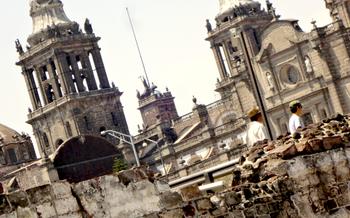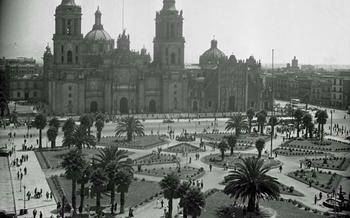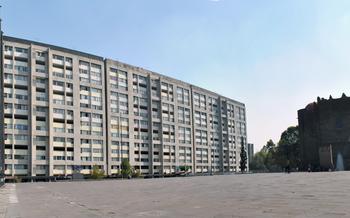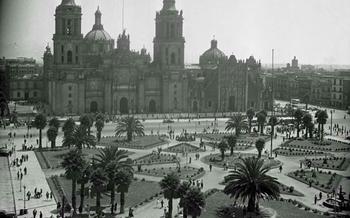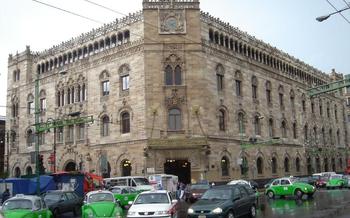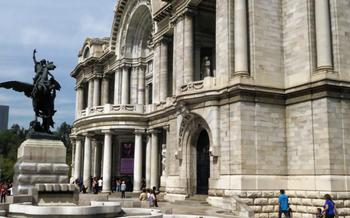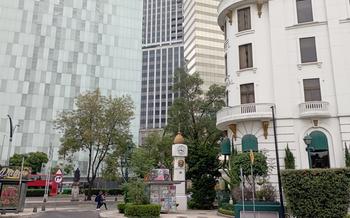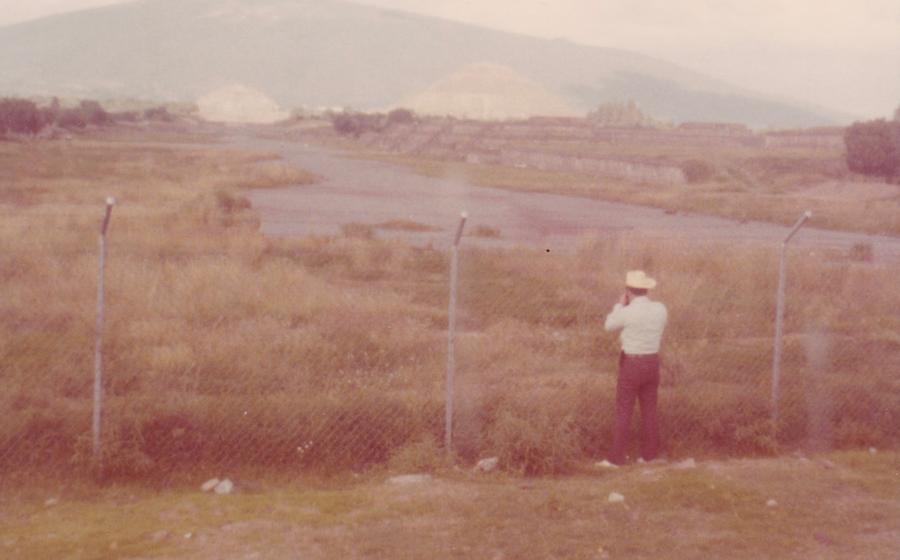
National Palace (Palacio Nacional)
- Time period of construction, Purpose of the building, Location of the building, Historical events associated with the building
- Architecture of the National Palace (Palacio Nacional)
- Significance of the National Palace (Palacio Nacional)
- Changing of the Guard Ceremony (Ceremonia del Cambio de Guardia)
- Guided Tours of the National Palace (Palacio Nacional)
- Accessibility to the National Palace (Palacio Nacional)
- Nearby Attractions to the National Palace (Palacio Nacional)
- Dress Code for Visiting the National Palace (Palacio Nacional)
- Photography and Videography at the National Palace (Palacio Nacional)
Time period of construction, Purpose of the building, Location of the building, Historical events associated with the building
The National Palace (Palacio Nacional), the seat of the Mexican government since 1821, stands as a testament to the country's rich history and enduring legacy. Its construction began in 1522, shortly after the Spanish conquest of Mexico, on the site of Moctezuma II's grand Aztec palace. The palace, a symbol of Spanish colonial rule, underwent several transformations over the centuries, reflecting Mexico's tumultuous journey from colony to independent nation.
Its prime location in the heart of Mexico City's historic center, facing the iconic Zócalo (Plaza de la Constitución), underscores its political and cultural significance. Throughout its existence, the palace has witnessed pivotal events that shaped Mexico's destiny. It served as the residence of numerous viceroys during the colonial era and was the site of Mexico's declaration of independence in 1821, a defining moment in the nation's history.
Architecture of the National Palace (Palacio Nacional)
The National Palace is a magnificent example of Spanish colonial architecture, blending Renaissance, Baroque, and Neoclassical elements. Constructed using local materials such as tezontle (a porous volcanic rock) and limestone, the palace showcases a series of courtyards, arcades, and grand halls. The main façade, overlooking the Zócalo, features a symmetrical design with pilasters, balconies, and intricate carvings. The palace's distinctive tower, known as the Torre del Reloj (Clock Tower), was added in the 17th century and offers panoramic views of the city. The building's overall grandeur and architectural harmony make it a captivating landmark and a symbol of Mexican history and power.
Significance of the National Palace (Palacio Nacional)
The National Palace is a symbol of Mexican history and identity. It has served as the seat of government since the Spanish conquest and has witnessed many of the most important events in Mexico's history, including the signing of the Treaty of Guadalupe Hidalgo, which ended the Mexican-American War, and the Mexican Revolution.
The palace is also a cultural icon, representing the blending of Mexican and European influences. Its architecture reflects the various periods of Mexican history, from the Spanish colonial era to the present day. The palace is home to a number of important works of art, including murals by Diego Rivera and José Clemente Orozco, which depict scenes from Mexican history and culture.
The National Palace is a living symbol of Mexico's rich history and culture. It is a must-see for anyone interested in learning more about this fascinating country.
Changing of the Guard Ceremony (Ceremonia del Cambio de Guardia)
The Changing of the Guard Ceremony at the National Palace is a spectacular display of Mexican military tradition and pageantry. The ceremony dates back to the 19th century and has been performed daily ever since.
The ceremony begins with the arrival of the outgoing guard, who march in formation to the palace's main entrance. They are then greeted by the incoming guard, who stand at attention in front of the palace. The two guards then exchange salutes and the outgoing guard marches off, while the incoming guard takes their place.
The ceremony is accompanied by a military band, which plays traditional Mexican music. The ceremony also features a number of other elements, such as a flag-raising ceremony and a reading of the presidential decree.
The Changing of the Guard Ceremony is a popular tourist attraction and is a great way to experience the rich history and culture of Mexico. The ceremony takes place every day at 10:00 am and lasts for about 30 minutes.
Best Spots to View the Ceremony:
- The best spot to view the ceremony is from the Zócalo, the main square in front of the palace.
- For a closer view, you can stand on the steps of the palace or in one of the balconies overlooking the square.
- If you want to avoid the crowds, you can watch the ceremony from one of the side streets near the palace.
Guided Tours of the National Palace (Palacio Nacional)
To delve deeper into the history and significance of the National Palace, consider embarking on a guided tour. These tours are led by knowledgeable guides who provide insightful commentary, ensuring that you don't miss any important details. Guided tours are available in various languages, catering to international visitors. The duration and cost of the tours vary, so check the official website or inquire at the palace's information desk for more details.
During the guided tour, you will be taken through the palace's grand halls, courtyards, and gardens. You'll learn about the historical events that transpired within these walls, the symbolism behind the murals, and the significance of the palace in Mexican history. The guide will point out architectural highlights, such as the intricate carvings on the facade or the stunning stained-glass windows.
Guided tours offer a unique opportunity to gain a deeper understanding of the National Palace and its importance. Whether you're a history buff, an architecture enthusiast, or simply curious about Mexican culture, a guided tour is an excellent way to explore this iconic landmark.
Accessibility to the National Palace (Palacio Nacional)
The National Palace is committed to ensuring that all visitors, including those with disabilities, can enjoy and access its historical and cultural treasures. The palace features a variety of accessibility features to facilitate ease of movement and provide an inclusive experience for all.
Accessibility Features:
-
Ramps and Elevators: The palace is equipped with ramps and elevators to ensure that visitors with mobility impairments can easily navigate the different levels of the building.
-
Adapted Tours: Visitors with disabilities can request adapted tours that are tailored to their specific needs and interests. These tours may include sign language interpretation, audio descriptions, or tactile experiences.
-
Contact Information: For assistance with accessibility or to arrange for adapted tours, visitors can contact the palace's accessibility office at [email protected] or call [phone number].
Tips for Visitors with Disabilities:
-
Advance Notice: It is recommended that visitors with disabilities inform the palace in advance of their visit so that necessary arrangements can be made.
-
Accompanied Visits: Visitors with disabilities may be accompanied by a companion or caregiver who can assist them during their visit.
-
Assistance Animals: Service animals are welcome at the National Palace.
-
Rest Areas: There are designated rest areas throughout the palace where visitors can take breaks as needed.
-
Accessible Restrooms: Accessible restrooms are available on multiple levels of the palace.
Nearby Attractions to the National Palace (Palacio Nacional)
The National Palace is conveniently situated in the heart of Mexico City's historic center and is surrounded by a wealth of other attractions that are well worth exploring.
Just steps away lies the Zócalo, also known as the Plaza de la Constitución, which is the city's main square and a hub of activity. Here, you can admire the towering Metropolitan Cathedral and the Templo Mayor, an ancient Aztec temple that has been partially excavated and restored.
Another must-see attraction is the Palacio de Bellas Artes, a stunning opera house and cultural center that showcases world-class performances and exhibits. The Alameda Central, a beautiful park located a short walk from the National Palace, offers a tranquil oasis amidst the bustling city.
For those interested in exploring further, the National Museum of Anthropology is a short metro ride away and houses an impressive collection of artifacts from Mexico's diverse indigenous cultures.
By combining your visit to the National Palace with these nearby attractions, you can create a comprehensive and enriching itinerary that will provide a deeper understanding of Mexico's rich history and vibrant culture.
Dress Code for Visiting the National Palace (Palacio Nacional)
When visiting the National Palace, it is important to dress respectfully, as it is a government building and a symbol of Mexican history and culture. While there is no specific dress code, visitors should avoid wearing casual or revealing clothing. For men, long pants and a collared shirt are appropriate, while women can opt for a dress, skirt, or pantsuit. Shorts, tank tops, and flip-flops are generally not considered appropriate attire for visiting the palace.
For the Changing of the Guard Ceremony, it is customary to dress more formally. Men should wear a suit or dress pants with a shirt and tie, while women can wear a dress, skirt, or pantsuit. It is also important to remember that the ceremony takes place outdoors, so dressing in layers is recommended, especially during the cooler months.
Overall, the key to dressing appropriately for a visit to the National Palace is to be respectful and to dress in a way that is suitable for a formal setting. By following these guidelines, visitors can ensure that they have a positive and enjoyable experience at this iconic Mexican landmark.
Photography and Videography at the National Palace (Palacio Nacional)
Photography and videography are generally allowed within the National Palace, providing a great opportunity to capture your visit and share it with others. However, there are some restrictions and guidelines to keep in mind.
Photography and videography are prohibited in certain areas of the palace, such as the presidential offices and other sensitive areas. These areas will be clearly marked with signs. Flash photography is also prohibited in some areas, such as the National Museum of Mexican History, to protect the delicate artifacts on display.
When taking photos and videos, be respectful of other visitors and avoid blocking their view or interrupting their experience. It's also important to be aware of your surroundings and keep an eye on your belongings to avoid theft.
Tripods, monopods, and other photography equipment are generally permitted, but they may not be allowed in certain areas due to space limitations or safety concerns. If you have any doubts, it's best to ask a member of the palace staff for guidance.
To capture the best photos and videos of the National Palace, consider visiting during the golden hours of sunrise or sunset when the light is most flattering. The palace's architecture and murals are particularly stunning in the warm glow of the early morning or evening light.
Remember, the National Palace is a place of historical and cultural significance, so it's important to be respectful and mindful of your actions when taking photos and videos. By following these guidelines, you can ensure that you have a positive and enjoyable experience while capturing your memories of this iconic landmark.
